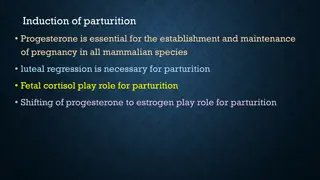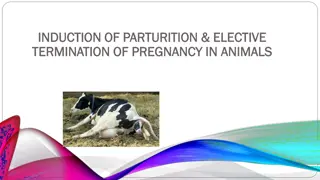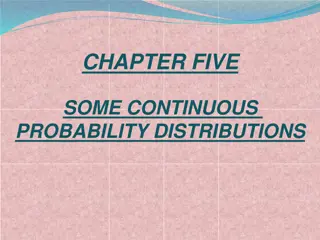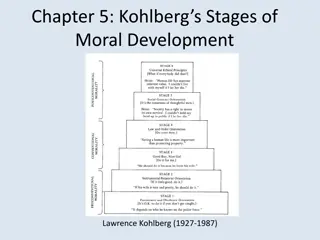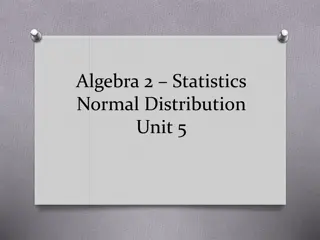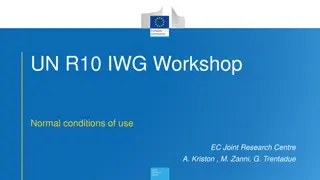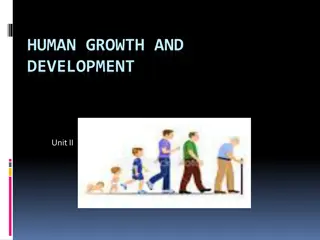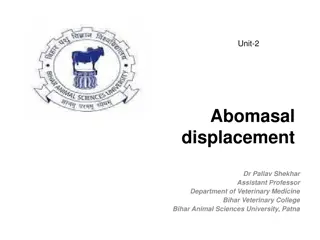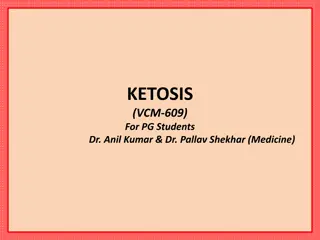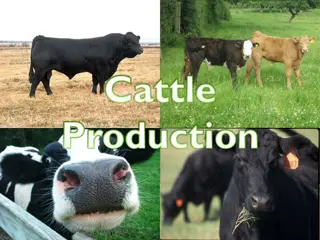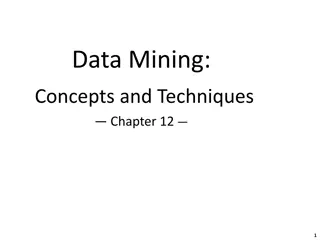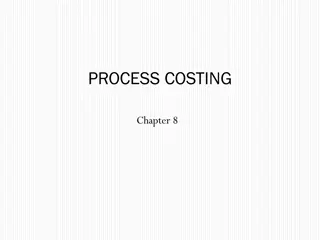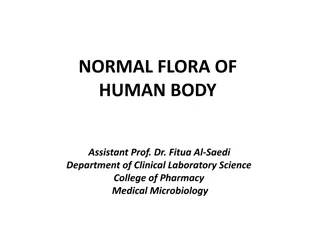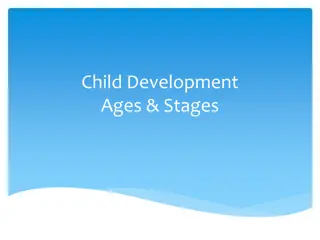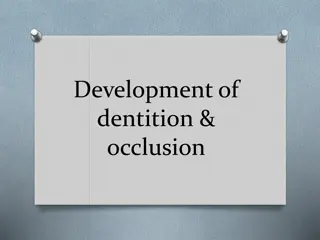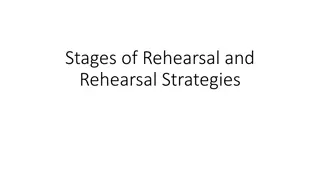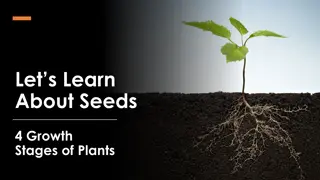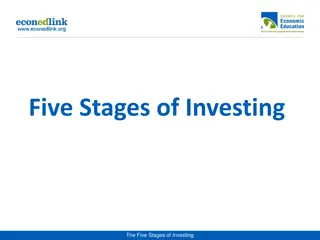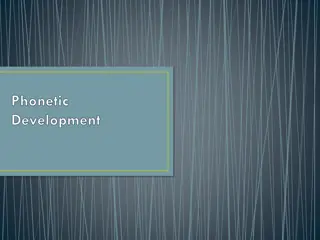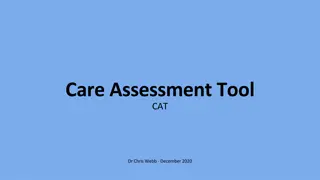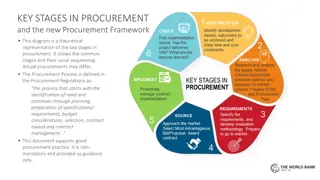Understanding Normal Parturition: The Stages and Processes
Normal parturition, also known as childbirth, involves several stages including uterine contractions, cervix dilatation, fetal positioning, and the weakening of the placental connection. The process gradually prepares the birth canal for delivery, with the fetus assuming a specific position for birth. This article explains the progression of normal parturition in detail, highlighting the physiological changes and factors involved in a successful delivery.
Download Presentation

Please find below an Image/Link to download the presentation.
The content on the website is provided AS IS for your information and personal use only. It may not be sold, licensed, or shared on other websites without obtaining consent from the author. Download presentation by click this link. If you encounter any issues during the download, it is possible that the publisher has removed the file from their server.
E N D
Presentation Transcript
PARTURITION The stages of parturition The first stage of parturition (dilatation of the cervix) characterize with: 1- uterine contraction At first stage each contraction wave take 15-30 sec for every 10-15 min (longitudinal and circular contraction) Near parturition the contraction wave increase in frequency and in strength Before 1 hour from parturition the contraction wave take 2-3 minute for every 2-3 minute (2 minute rest and 2 minute contraction) Uterine contraction play about 70-90% from the effort of parturition while 10-30% related with abdominal contraction
PARTURITION The first stage of parturition (dilatation of the cervix) 2- cervix dilatation The estrogen as well as the relaxin play a role to change the cervix from compact tissue to soft tissue and after that the contraction as well as these two factor lead to cervix dilatation The dilatation appear from external side of the cervix to the internal part of the cervix Finally the uterus and the cervix and the vulva become one canal which is called birth canal
PARTURITION The first stage of parturition (dilatation of the cervix) 3- Weakness in the connection between the placenta and uterus Mainly because the uterine contraction lead to a necrosis (fatty necrosis) between the caruncle and cotyledon 4- The fetus take the position of parturition (presentation, position, posture) (P.P.P) Presentation: the relationship between the longitudinal axis of the fetus and the maternal birth canal Longitudinal (anterior or posterior) Vertical (dorsal or ventral) Transverse (dorsal or ventral)
PARTURITION The first stage of parturition (dilatation of the cervix) Position: indicates the surface of the maternal birth canal to which the fetal vertebral column is applied Dorsal Ventral Lateral Posture: refers to the disposition of the movable appendages of the fetus Flexion Extension Retention
PARTURITION The stage of parturition The first stage of parturition (dilatation of the cervix) This stage take 6-12 hour according to the species of animals Many systemic symptoms appear on the animals Subnormal temperature Udder enlargement
PARTURITION The second stage of parturition (expulsion of fetus ) Utero-abdominal contraction (contraction wave continue 1-2 minute in each 1-2 minute) The fetus enter the birth canal with the amnion Amnion fluid lubricate the birth canal to facilitate the movement of fetus in birth canal The fetus inside the birth canal stimulate the posterior lobe of the pituitary gland to secret oxytocin which increase the uterine contraction Fetus expulsion (with or without the amnion) The umbilical cord spontaneously cut off or may be take time after parturition
PARTURITION The second stage of parturition (expulsion of fetus ) This stage take : 15 minute in mare 1 hour in cow and ewe and goat 6 hours in bitch and queen
PARTURITION The third stage of parturition (expulsion placenta) It is clear in animals which pregnant with one fetus In animals which pregnant with many fetus the second and third stage appear together (after parturition the animals expelled the placenta before the second parturition) After parturition the contraction waves stop temporarily and after a time these waves return to expelled the placenta
PARTURITION The third stage of parturition (expulsion placenta) After parturition the caruncles suffer from dilatation and relaxation while the cotyledon suffer from shrinkage (because the blood stopping) And with uterine contraction the placenta expelled outside the uterus The estrogen as well as oxytocin play role for expulsion the placenta
PARTURITION The third stage of parturition (expulsion placenta) This stage take : 1 hour in mare 6 hour in cow and ewe and goat
DYSTOCIA The main reasons which lead to dystocia 1- The dam play a role for dystocia 2- The fetus play a role for dystocia
DYSTOCIA Treatment of dystocia Obstetrical mutation Fetotomy Caesarian section


